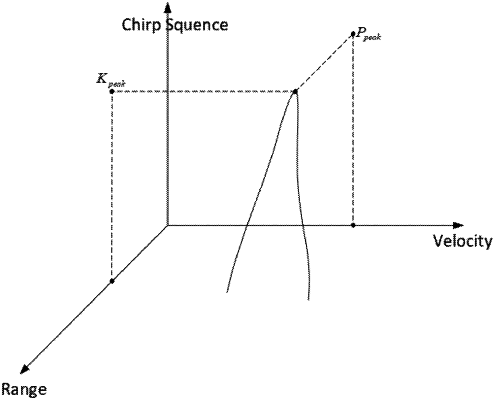| CPC G01S 7/354 (2013.01) [G01S 7/356 (2021.05); G01S 7/411 (2013.01); G01S 13/584 (2013.01)] | 14 Claims |

|
1. A method for improving object detection accuracy, comprising:
transmitting, by a transmitting antenna, radio signals to a target area;
receiving, by a receiving antenna, echo signals from one or more objects in the target area reflecting the radio signals;
mixing, by a mixer, the radio signals and the echo signals to obtain difference frequency signals;
performing analog-to-digital conversion (ADC), sampling, range fast Fourier transform (1D FFT), doppler fast Fourier transform (2D FFT), and constant false alarm rate (CFAR) detection on the difference frequency signals to obtain a velocity ambiguity factor q, a remainder frd of a doppler frequency shift fD, a sampling interval of an input data of the 2D FFT, and object peak data, wherein fD=frd+q×F and F represents a pulse repetition frequency;
obtaining a compensation value based on a compensation coefficient, the velocity ambiguity factor, the remainder of the doppler frequency shift, and the sampling interval of the input data of the 2D FFT, wherein the compensation coefficient is a preset constant or is obtained based on the sampling interval of the input data of the 2D FFT, and;
compensating the object peak data based on the compensation value; and
obtaining object data based on the compensated object peak data.
|